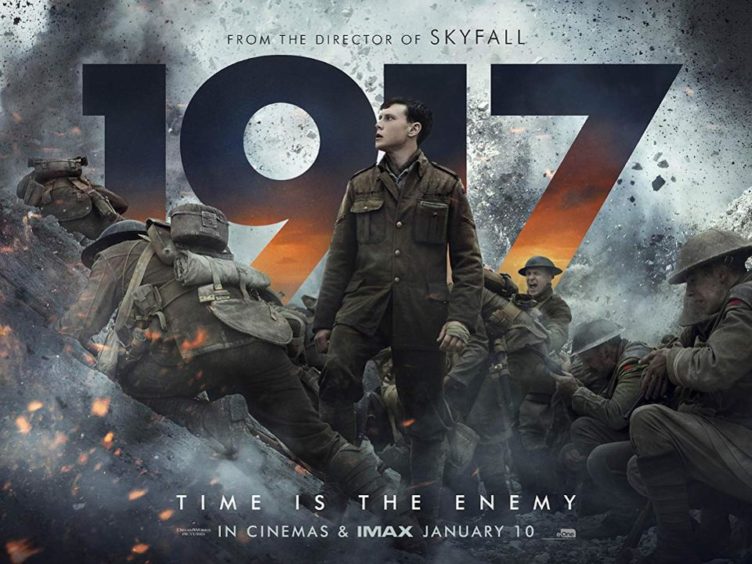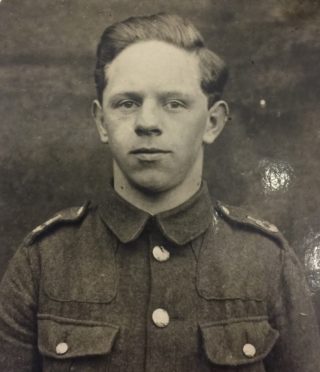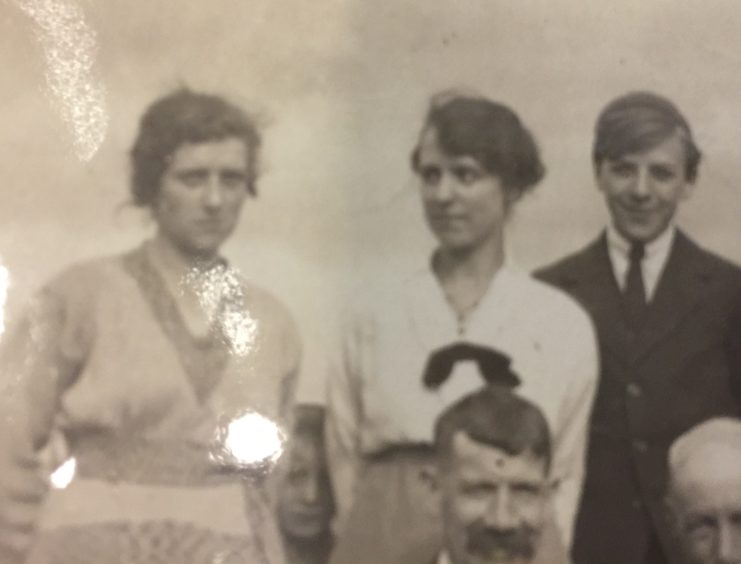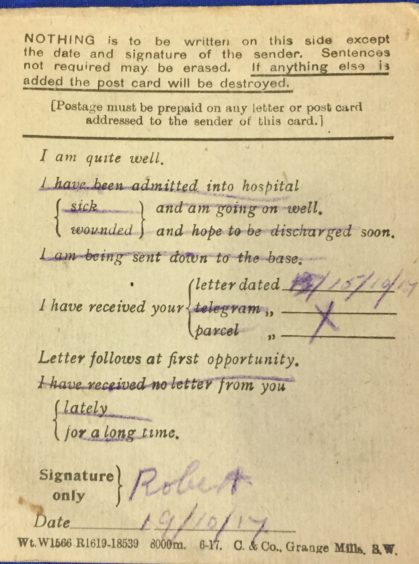Their relationship advanced with postcards from the edge and their love was ravaged by conflict.
And yet, in a story which still resonates more than a century later – and reverberates with the release of the acclaimed film 1917 – nothing could destroy the bond between Robert Dawson and Jessie Fletcher Orr.
Private Dawson was engaged to his childhood sweetheart when he died of catastrophic injuries after the trench in which he sheltered in Belgium was shelled in 1917.
Jessie never fully recovered from his demise and secretly carried a photograph of him in a gold locket around her neck until the day she died.
Although she later married James Jamieson, with whom she had three children, her devotion was obvious from how she named her daughter Margaret Dawson Jamieson.
Her grandson, Iain English, recalled: “Robert was the love of my grandmother’s life. They got engaged in 1914, when he was 19, and she was devastated when he died.
“She never fully recovered and went on to marry my grandfather, Jimmy, but it was a case of ‘you’ll do’ and I don’t think she was very happy throughout her life.”
Pte Dawson served with the 10th Battalion of the Lincolnshire Regiment and was 22 when he was badly wounded in Candle Trench at Poelcapelle, near Ypres.
He was taken to a military hospital in Etaples in northern France where he died in October, 1917.
The Scot was one of 29 men, all members of St John’s Church in Hamilton, who died in the Great War and his name adorns a war memorial within the sanctuary.
Mr English said: “I am very proud to remember Robert Dawson, who was a member of the church and most likely met my grandmother there.
“My grandmother married James Jamieson in 1922, but gave little impression that she was happily married.
“In fact, she went off on her travels to visit family in Australia and only returned to Scotland in 1924 to re-engage her marriage, wearing a gold locket which, unbeknown to my grandfather, secretly contained a photograph of Robert underneath one of him.
“She wore this locket throughout her marriage until her death in 1973.”
Mr English discovered more about Robert Dawson after his mother died in 2014 at the age of 84. She had kept treasured keepsakes from her mother, including a Christmas card sent from Loos, signed “with love from Robert”.

The most poignant is a Field Service postcard, written by Robert Dawson before his battalion moved to Gravel Farm, north of Poelcapelle where he was fatally wounded just eight days later.
It stated he was “quite well” and acknowledged he had received a letter from his sweetheart a few days before.
But there was no happy ending for the couple in this real-life story.


